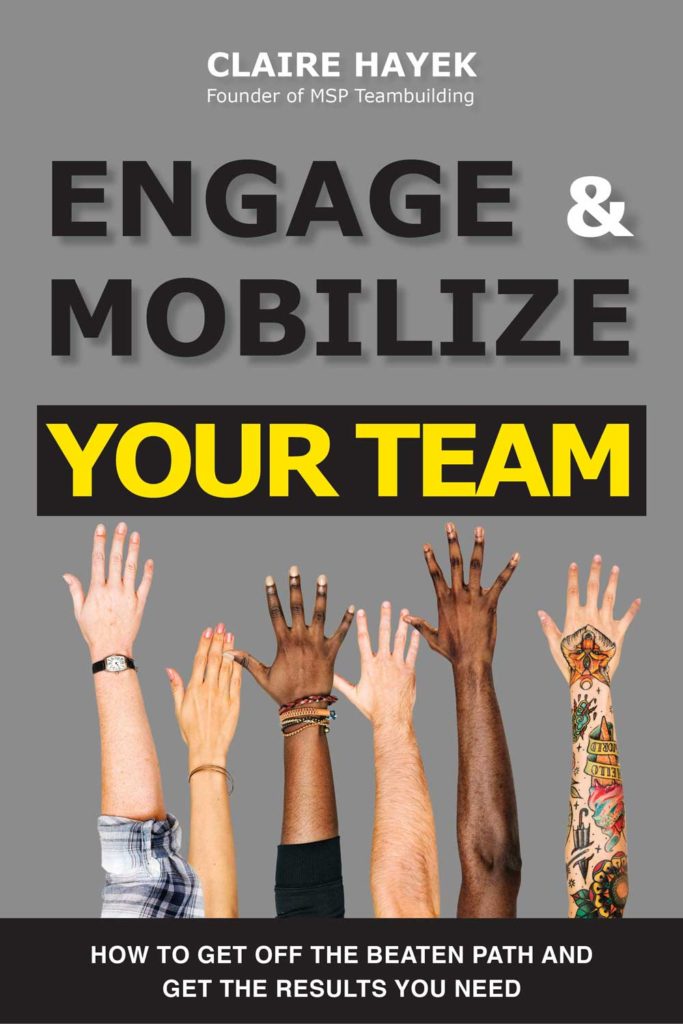
8 Useful Tips For Organizing Engaging Virtual Team Building Activities
Above all, what team leaders seek is for their employees to perform well together and be as efficient as possible. They are continually looking for tools and team building activities to motivate their team and improve their engagement.
Due to the COVID-19 pandemic and imposed social distancing in today’s virtual and remote work, the challenge they’re facing has risen to a whole different level. HR leaders plan various team-building activities to improve communication, integrate new employees, and help team members get to know each other better and create bonds.
These are important initiatives to employee recognition, health and well-being at the workplace and company culture. However, when these activities are organized while keeping a few points in mind, the results will not disappoint! In this article, I share a few tips for successfully planning engaging virtual team building events.
Why is Team Building important?
Team building is simply the most important investment you can make for your people. It builds trust, encourages communication, and increases collaboration. Effective team building means more engaged employees, which is great for company culture and boosting employee performance.
Therefore, if you think of team building as an investment, you certainly want to make sure your efforts are productive and fruitful.
8 Important Tips To Creating Engaging Team Building Activities
1. Define your need or focus
Organizations share the same challenges nowadays due to working virtually. However, let’s not forget that each team has its own needs, and one must focus on prioritizing these needs and catering to them accordingly.
It is why you should identify your primary goals or, even better, make a list of your priorities by ranking them from highly to less important. Here’s an example:
- Improve communication between colleagues
- Getting to know each other and building relationships
- Improve collaboration
- Improve or build our corporate culture
- Carry out an employee recognition activity
- Develop the team emotional intelligence
- Employee health and wellness
- Step out of your comfort zone
- Kick back and have fun together
- Employee personal development
2. Timing is everything
The ideal time for organizing a virtual activity is during work hours, whether during lunchtime or at the end of the day. It will maximize participation as after-work hours are not ideal, especially for employees with children.
You can either choose to plan an hour to an hour and a half event or keep it as short as 15 minutes and plan it right before an important meeting to energize your group. In either case, make sure your activities are diversified and original, as the attention span during virtual activities is much lower than during in-person events.
Finally, plan and repeat while establishing a healthy routine and don’t drop the ball. Whether done bi-weekly, monthly or every trimester, it will build motivation and keep improving engagement.
3. Assign the task to a rotating social club to improve engagement
Delegate it to a social committee with a pre-defined budget. It’s an excellent way for leaders to show their employees that they trust their judgment. We have found that when you provide opportunities for your employees to take the initiative and shine, they step up.
Keep your social club fresh by encouraging new members to join every trimester or every six months. It will encourage newcomers to integrate into the team much quicker and push some team introverts to take the initiative and show a good team spirit.
4. Incentify the event now and again to improve participation
Use incentives if you observe a bit of a drop in participation. It’s a method that never fails but use it wisely as it may have a negative effect in the long run if participation becomes dependent on the reward.
Incentives can be as simple as gift cards to the winning team, and it doesn’t have to cost you a fortune. It’s the gesture that counts !
5. Make it interactive and fun
For a successful virtual activity, choose games or initiatives that are interactive and fun creating special bonding moments within a team. Furthermore, games that stimulate collaboration where teams work in virtual breakout rooms are proven to be efficient icebreakers.
Here are some examples to name a few:
- Laughter Yoga
- Learn to juggle
- Creative games and icebreakers such as blind drawing or shark tank
- Magic, Comedy or Music shows
6. Activity review and debrief
Facilitators need to coach the activity from beginning to end, including the review and debrief. The latter is crucial as all team members will share their views on the event and what they learned or liked. It also helps improve team emotional intelligence by learning to listen to one another and express emotions openly. Some suggested review questions are:
- What was the most challenging aspect of the activity for you?
- What did you enjoy about the activity?
- What did you learn about yourself or your colleagues?
- How well did you work as a team?
- How could you have improved?
- How can this experience be applied to your day-to-day tasks?
7. Some essential rules that will make it all so much more pleasant
The games will be far more effective if you share some specific rules right from the start, such as:
- Hierarchy and titles are left at the door;
- Encourage a good playful team spirit and an open mind;
- Facilitators should choose team members to:
- Encourage interaction between employees that don’t know each other well or that rarely communicate together;
- Encourage gender, age, and cultural diversity.
8. Get their feedback with a short survey
Send a quick survey right after the event for your team’s feedback. Ask them to rate the activity, what they liked or disliked about it, ask them suggestions for the next activity, so on and so forth. It is a way for you to measure the activity’s effectiveness and how it affected team motivation. It also provides tips on what activities drive your team and which ones don’t.
Conclusion
It is essential to properly launch these initiatives and stick with a routine regardless of daily highs and lows, busy and slow months. If monthly virtual activities are too difficult to sustain, then spread them out. Keeping the momentum is key to mobilizing your team and sustaining engagement. For more tips and tricks for team mobilization, you can download a free copy of my e-book ‘Engage and mobilize your team’ or get a Kindle version here.
I hope these tips will help you and your team plan your next activity, whether done virtually or in-person. We would love to hear from you in the comments below if you have key points to share with our readers on your successful events.
About Claire Hayek– President & CEO, Author & Team-Building Leader at MSP Teambuilding, Claire is always eager to share her knowledge about team motivation and is passionate about learning new things. Got any questions? Drop a mail at [email protected]






